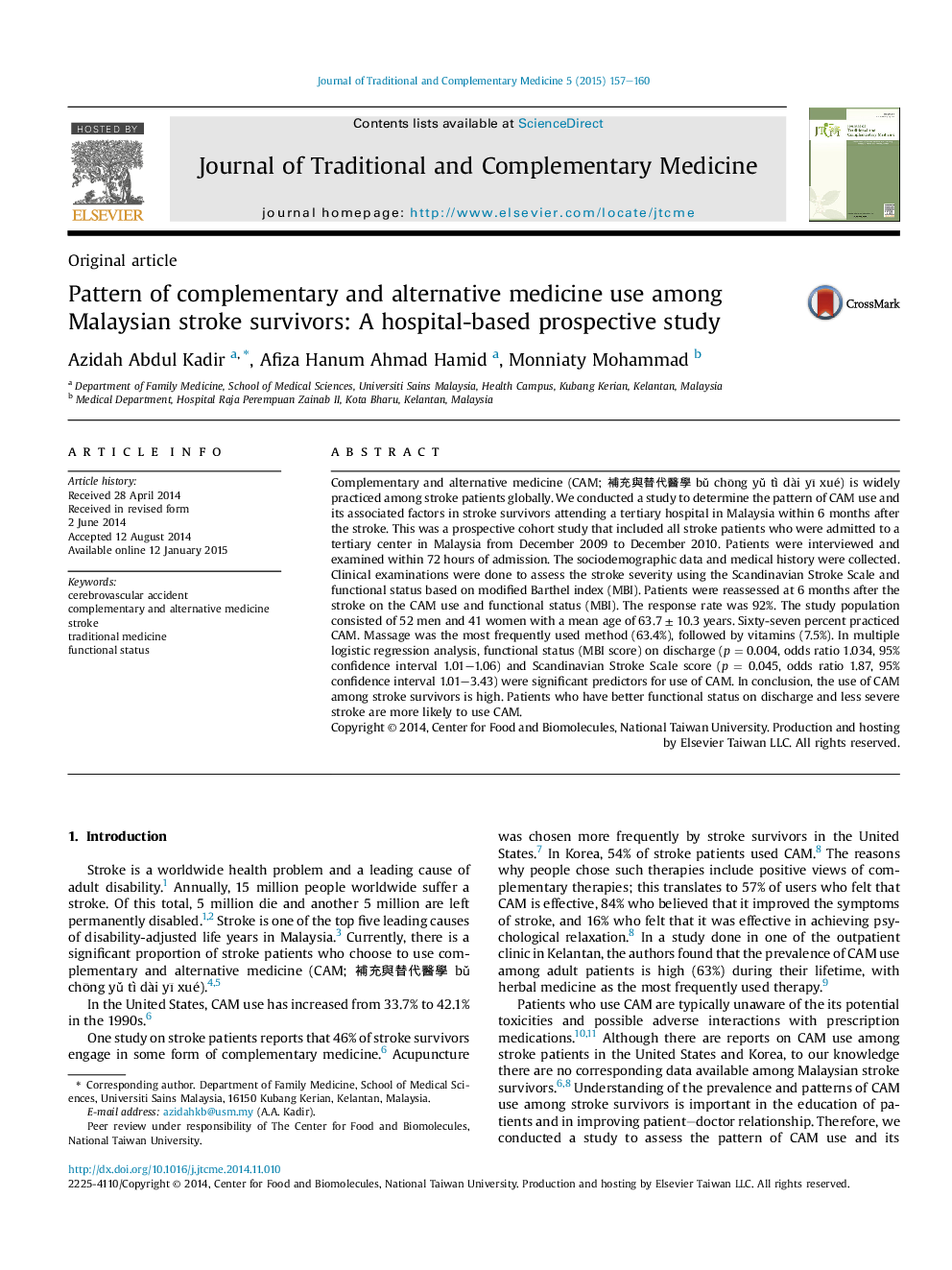| Article ID | Journal | Published Year | Pages | File Type |
|---|---|---|---|---|
| 3099762 | Journal of Traditional and Complementary Medicine | 2015 | 4 Pages |
Complementary and alternative medicine (CAM; 補充與替代醫學 bǔ chōng yǔ tì dài yī xué) is widely practiced among stroke patients globally. We conducted a study to determine the pattern of CAM use and its associated factors in stroke survivors attending a tertiary hospital in Malaysia within 6 months after the stroke. This was a prospective cohort study that included all stroke patients who were admitted to a tertiary center in Malaysia from December 2009 to December 2010. Patients were interviewed and examined within 72 hours of admission. The sociodemographic data and medical history were collected. Clinical examinations were done to assess the stroke severity using the Scandinavian Stroke Scale and functional status based on modified Barthel index (MBI). Patients were reassessed at 6 months after the stroke on the CAM use and functional status (MBI). The response rate was 92%. The study population consisted of 52 men and 41 women with a mean age of 63.7 ± 10.3 years. Sixty-seven percent practiced CAM. Massage was the most frequently used method (63.4%), followed by vitamins (7.5%). In multiple logistic regression analysis, functional status (MBI score) on discharge (p = 0.004, odds ratio 1.034, 95% confidence interval 1.01–1.06) and Scandinavian Stroke Scale score (p = 0.045, odds ratio 1.87, 95% confidence interval 1.01–3.43) were significant predictors for use of CAM. In conclusion, the use of CAM among stroke survivors is high. Patients who have better functional status on discharge and less severe stroke are more likely to use CAM.
Graphical abstractFigure optionsDownload full-size imageDownload as PowerPoint slide
